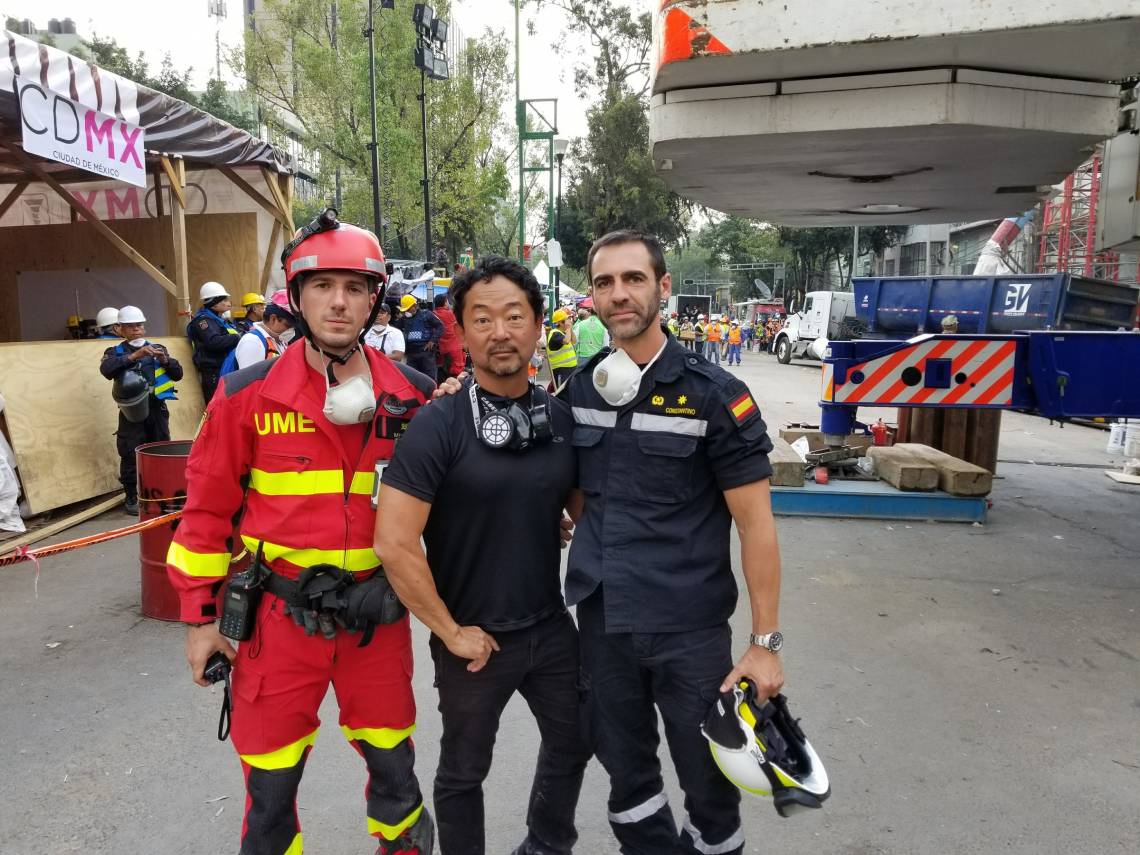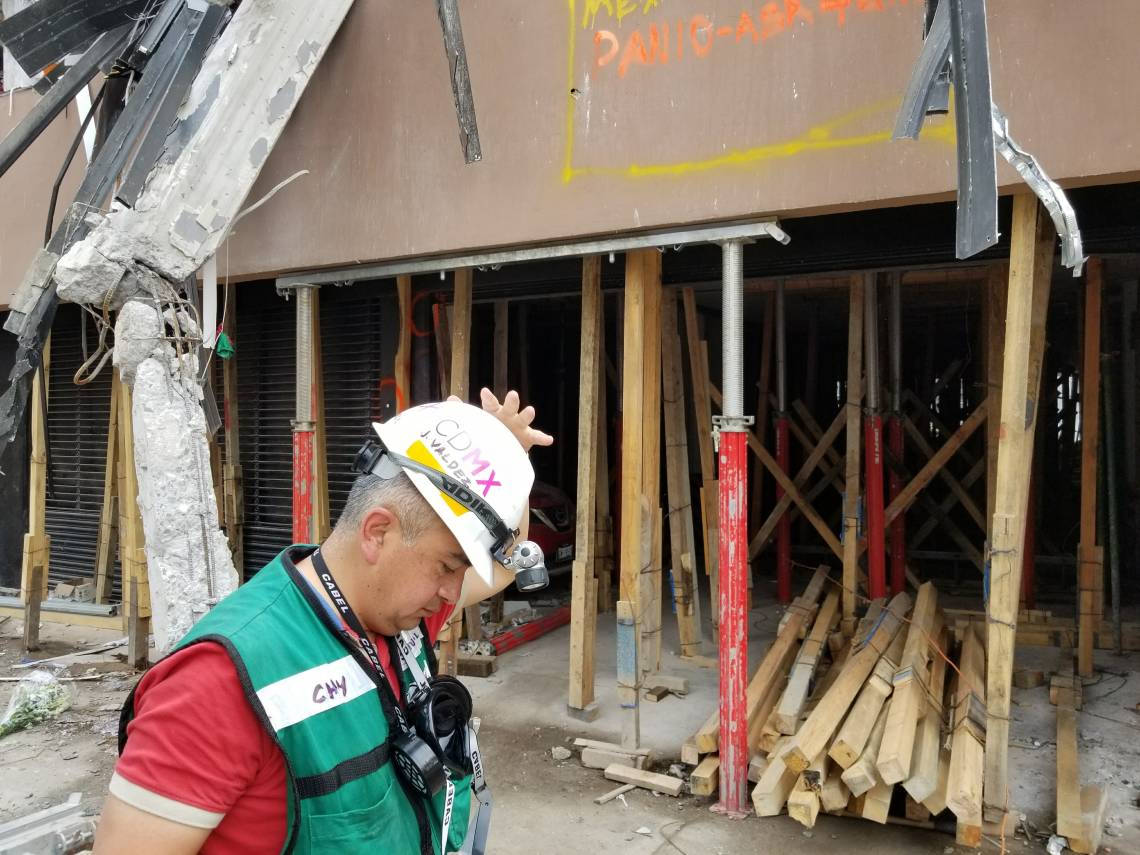Video: Under a Collapsed Building
I’m in Mexico City a week after the earthquake and this is our first day assisting a local engineering team. A seven-story concrete office building has collapsed. They call it Site 286. More than 40 people died here, probably the largest number of fatalities in a single structure.
“Let me radio in for them to stop
throwing concrete debris in our pathway.”
“Alto! (Halt!),” a Spanish urban search-and-rescue (USAR) officer yells at me. “Let me radio in for them to stop throwing concrete debris in our pathway.”
They’ve asked for assistance evaluating whether concrete debris piled up against the collapsed building is causing additional instability. Picture this: The top six levels are pancaked on top of the building’s bottom level. It is now heavily shored at the ground floor. More than 100 extensively equipped USAR members drill and cut from above to peel off concrete slabs a chunk at a time. They are from all over the world: Mexico, Israel, Germany, Spain, Korea. High-tech laser survey equipment measures even 1 mm of movement. A large overhead crane roams overhead. It is a highly technical operation.

All this is accomplished pretty much by professional volunteers who rushed to the site. Unbelievable. Government-led Mexican civil protection, firefighters, city and Marine troops provide efficient organizational structure and security. Twenty people remain missing here. We need to secure everyone. Quickly.
We climb to the top of the collapsed structure through the building next door, then walk over the busy collapsed site to the building on the other side. As we descend stairs, we carefully examine each floor. We inspect the cracks to understand what’s going on. On the fourth floor, I see a wall with horizontal, gridline-like cracks slightly bulged inward. I instantly recognize the wall is about to burst inward toward us because of the huge amount of debris pressure against it. This is the same crack pattern I saw in the 2011 Tohoku Japan Tsunami. The great pressure of the tsunami wave caused this same pattern of damage to concrete walls. As I explain this, an engineer radios upstairs to start removing the pressure by removing debris.

The lead engineer, mid-40s, is normally a civil engineer employed as technical director of a construction company, but when this crisis arose, he stepped in. All his life experience prepared him for this challenge. It is almost like someone above positioned him at the right place, at the right time. He mobilizes an army of volunteering specialists and equipment. He foregoes his paying job to serve his people. He is a hero; the most capable one. He and his team work around-the-clock here to make sure the USAR team is safe while they retrieve bodies.
His eyes are filled with sorrow, but also at peace. You may ask why we take such risks to do this. For the family members waiting outside, there is always hope. That’s why we do it.
A Spanish USAR officer comes up with quick shoring schemes for the walls. We walk downstairs, over debris, then scale a fragile ridge of more debris to the other side of the collapsed building to inspect the condition of exposed steel stairs that could threaten a survey crew nearby. The bottom steel is bent and a major aftershock could dislodge it. We move the survey crew to a safer location.
The Spanish USAR officer is a 30-something Army officer, firefighter and engineer. He and his team’s mission is to retrieve a Spanish citizen’s body, as well as to work with others. “One hour ago,” he says, “we finally discovered his body. I met his wife. She gave me earrings that her now-deceased husband gave to her for their final anniversary. She asked me to give these to my wife.” All of us cried.


